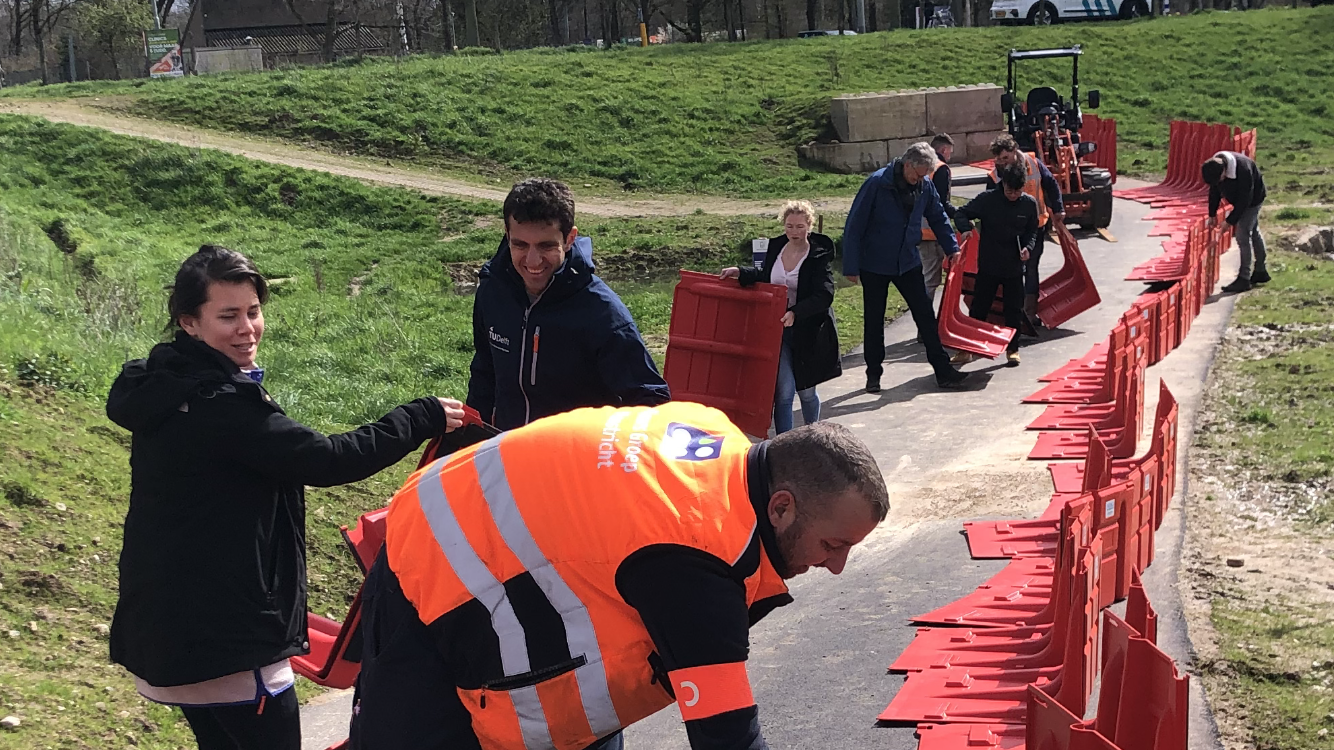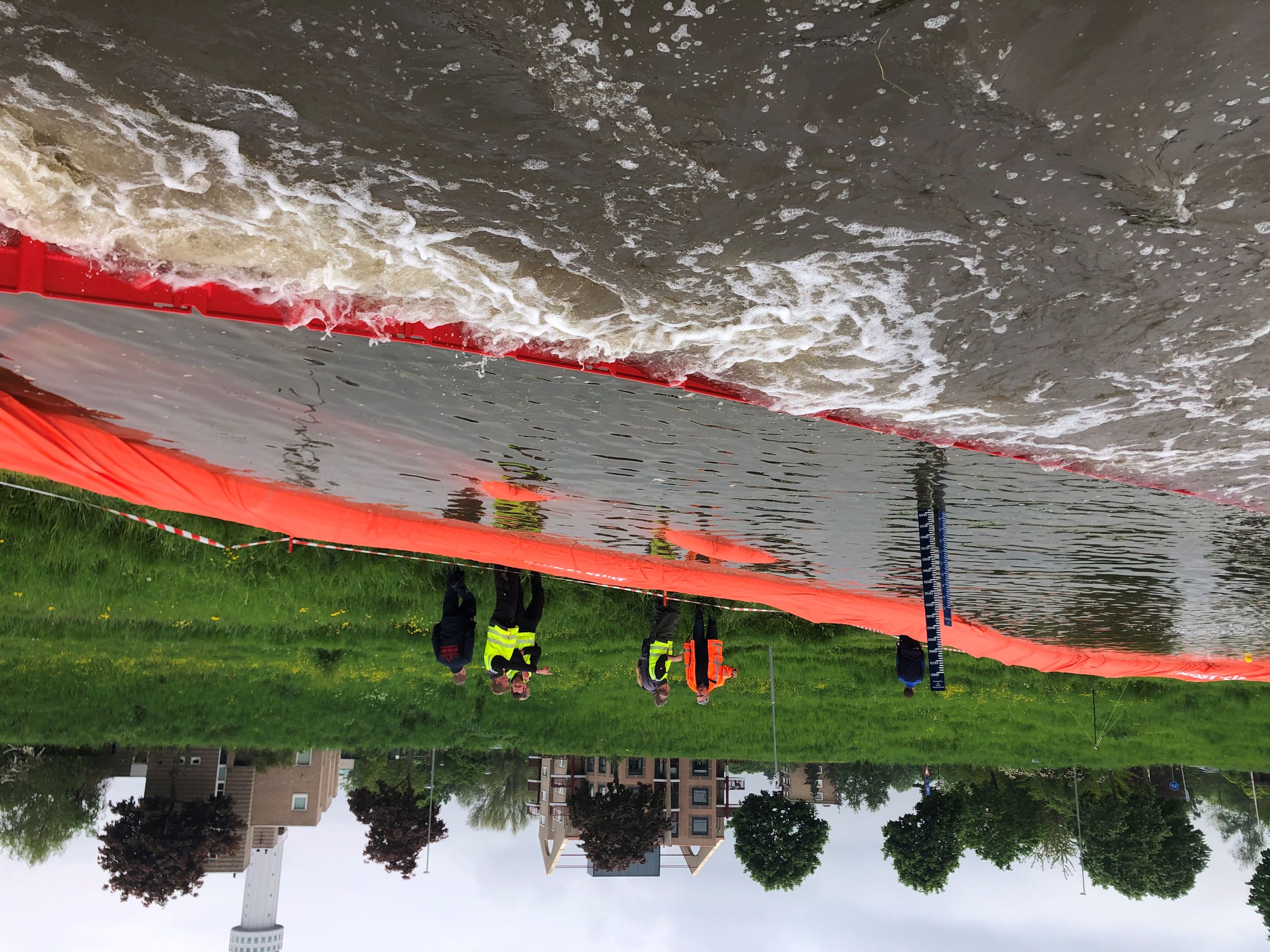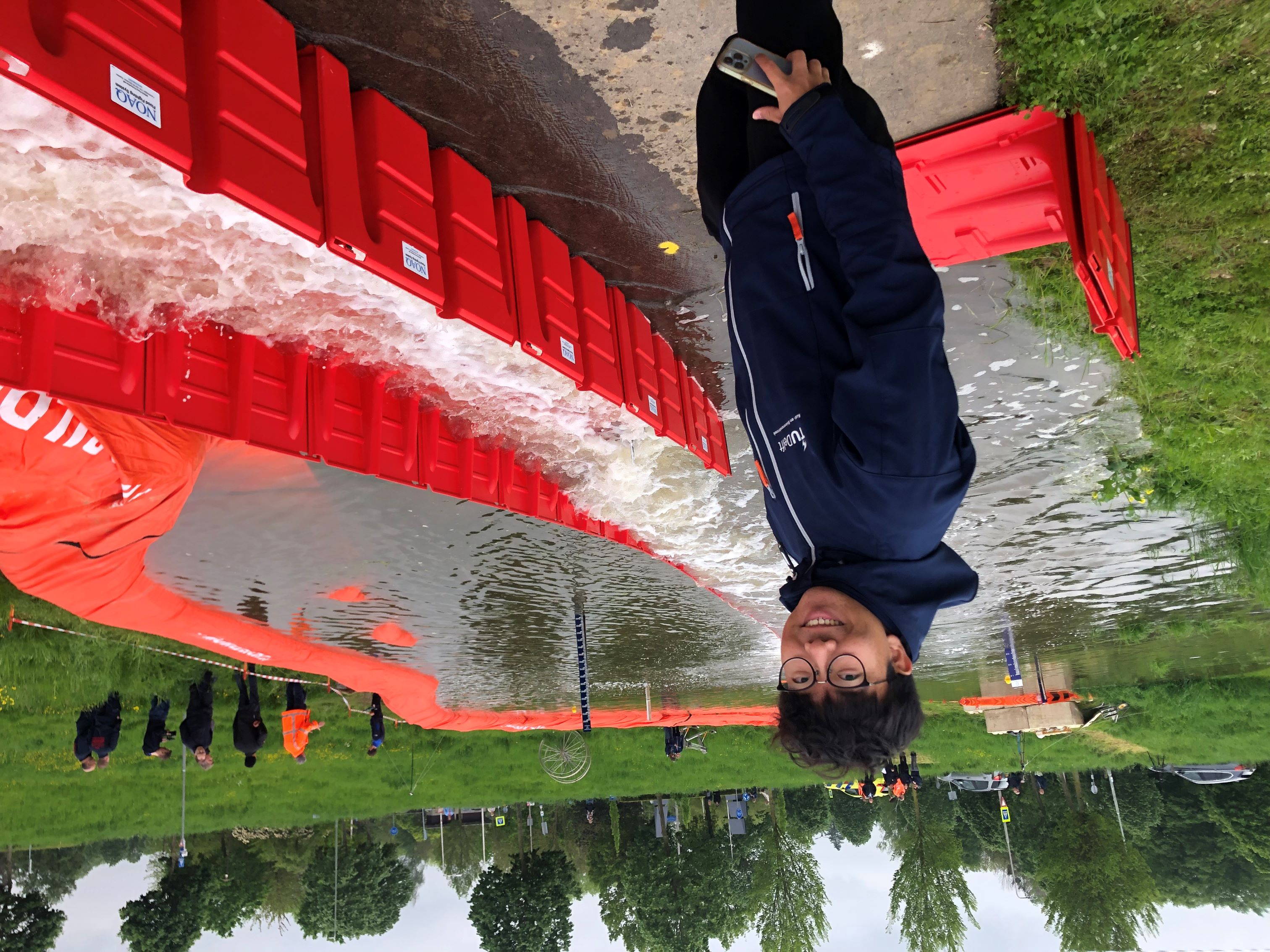Connecting the pieces of the puzzle for a water-robust Limburg
In the summer of 2021, the south of Limburg suffered from unprecedented flooding. Due to an extreme amount of rainfall in a short time, the Meuse, Geul and Rur rivers overflowed their banks. How could that happen? And perhaps more importantly: How can we prevent it from happening again? Students and other researchers attempt to answer these questions in the Delta Futures Lab: Limburg 2021.
We're all working on a small piece of the big puzzle.
According to Dennis Ronckers, a hydraulic engineering master's student, the major flooding in July 2021 was the result of unique circumstances. ‘Just across the border in Belgium and Germany, more than a month’s worth of rain fell in a few days. Because the rain lingered in the same area for days, water buffers above-ground and underground became saturated and villages and towns, such as Valkenburg, were flooded. Neighbouring countries experienced much greater damage, with large parts of villages being destroyed by landslides caused by the extreme rainfall. Hundreds of people were injured and dozens were killed.’
Delta Futures Lab: Limburg 2021
To find out how it came to this, the Limburg 2021 project group was set up within the Delta Futures Lab. In it, bachelor's, master's and PhD students investigate what exactly happened in the summer of 2021 and how to prevent it from happening again. Ronckers didn't have to think twice when he was asked to work on a study in the lab. ‘Although I did not directly suffer from the flooding, I’m from Limburg and have seen up close the damage it has done. This really motivated me to participate in the project and contribute to more knowledge and insights.’
Bottlenecks in the Geul
Ronckers focuses on two issues within the lab. ‘The first is about getting an overall picture of the Geul siphon. This is a kind of tunnel of the Geul that runs under the Juliana Canal. During the flooding, it was the site of a major bottleneck. The water from the Geul could not reach the Meuse on the other side of the Juliana Canal. Among other things, I looked at how exactly the siphon functions and which aspects caused the resistance. Continuing on from this, I’m currently working on a study on the accumulation of driftwood, which involves doing simulations in the flow channel of TU Delft’s WaterLab.’

Predicting the behaviour of the Rur river
Like Ronckers, Sebastian Hartgring is also conducting research within Delta Futures Lab: Limburg 2021. He focuses on another river in the area, the Rur. ‘I use models to try to predict how the Rur behaves when enormous amounts of water flow in and out. For this I need to know, among other things, how much precipitation falls in a specific place within a specific period and how much water can be stored in reservoirs in Germany. Based on that, the model can predict how much water flows in and out of the reservoirs within a certain time frame and how that water spreads further when it crosses the border with the Netherlands.’
Site visits are motivating
‘The students mainly experiment and do the modelling in Delft’, says Hartgring. ‘But we have also travelled to the affected area several times for site visits. Among other things, we went on a guided tour in Valkenburg where we could see how high the water was. It reached our knees in some places. That really made an impression. I have also been to a number of reservoirs in Germany. During the flooding, they had an outflow that was almost ten times higher than normal. Cars had even been swept into the reservoir. Site visits like that really give you a proper feel for how intense it must have been.’

Different disciplines
‘The Limburg 2021 project group consists largely of students from the field of hydraulic engineering and water management’, says Ronckers. ‘That makes sense given the subject matter but other disciplines, such as urban and regional planning, are also involved. For example, there is someone who looks at the effects of the greening of urban areas. More greenery has a buffering effect, so less water is drained away. There are also researchers who are involved with the costs of risk reduction. In the end, all these different studies are linked together. So we're all working on a small part of the big puzzle.’
Getting together for consultation
‘The students and researchers of the Delta Futures Lab meet once every few weeks to consult with each other’, says Hartgring. ‘Among other things, we discuss the progress of all the research, compare results, look at what else we need from each other and ask questions. We also recently discussed a letter to Parliament about how the minister wants the response to the flooding in Limburg to be guided by water and soil. Everyone could then shed light on this based on his or her research. Sometimes people from the ministry, the province or the water board are also present at such meetings. It's nice to be able to communicate directly with each other and exchange ideas.’
Large network with short lines of communication
Hartgring thinks the biggest advantage of doing research in the Delta Futures Lab is the enormous network you have at your disposal. ‘Not only within the university, but across the board. Martine Rutte (director of the Lab, red.) knows exactly who can help you with something. It makes a huge difference when you immediately have access to the right person and can approach them directly. For example, I was able to visit the reservoirs in Germany because one of Martine’s colleagues got in touch with a contact named Christof in Germany for me. He immediately invited me to visit. We also have close contacts with the Limburg Water Board and partners from Germany and Belgium for the exchange of data, for example.’
Substantiation for targeted solutions
Although Hartgring and Ronckers' research is not directly focused on solutions, their findings can be used for follow-up research. Hartgring: ‘For example, the predictive model I made for the Rur is used along with a model for the Geul for a larger model for the Meuse. Deltares, the institute where I carry out my graduation research, is currently working on this.’ Ronckers: ‘The most important thing is for our research to get a ball rolling. First, we need to have an idea of how the whole system works. Based on this, governments and other parties can then make well-founded choices for measures to be taken, such as a better sponge effect of the area.’
Staying involved after the research
Ronckers is also currently connected to the Waterveiligheid en Ruimte Limburg programme (Water Safety and Spatial Planning) for one day a week. ‘I hope to be able to do even more for my province in the field of water safety in the coming years. I also think it would be nice to remain involved in the Delta Futures Lab.'
Once my research is finished, I will no longer be officially affiliated with the university, but that does not mean that I can no longer contribute. Just as I have benefited a lot from external contacts as a student, I can also become such a contact person myself. I think that would be very worthwhile says Ronckers.

Photos: Jean-Paul de Garde, TU Delft
